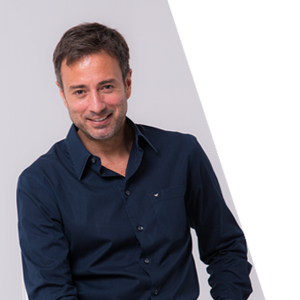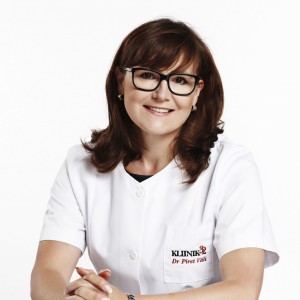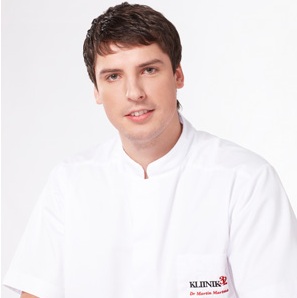Presentations 2014
 All ceramic restorations. A minimally invasive approach in contemporary prosthodontics.
All ceramic restorations. A minimally invasive approach in contemporary prosthodontics.
Dr. Stavros Pelekanos, DDS, Greece
All ceramic restorations present often a challenging treatment modality in the esthetic area. The treatment planning, the preparation design and the accurate execution of the cementation procedure are of utmost importance for a predictable and successful outcome.
The objectives of the course are:
- To understand the properties of all ceramic materials and manufacturing procedures
- To select and analyze a case regarding the smile design, diagnostic wax up and transferring the information to the patients mouth
- To be able to follow a correct preparation technique and cementation procedure according to the chosen material
- To be acquainted with the fabrication procedures of all ceramic restorations
Single implants in the esthetic zone. New perspectives
Successful implant restorations in the esthetic zone require often demanding surgical and prosthetic therapeutic procedures in order to achieve long term stable results. Anatomical factors such as the thin buccal bone plate, the thin soft tissues and the high scalloping further complicate the decision-making and the treatment workflow. Despite the clinical and scientific evidence the clinical handling and the treatment sequence and workflow is of outmost importance determining the final outcome of the implant restoration.
The soft and/or hard tissue enhancement in the majority if not all of the cases in the esthetic zone is absolutely necessary in order to achieve a highly esthetic and natural appearance of the implant crown. The timing, the material selection and the type of the prosthetic restoration further complicate the decision-making and affect the final result.
The aim of this lecture is to analyze and categorize different treatment modalities, focus on the methodology and treatment workflow in esthetic implant cases and give some guidelines to achieve optimum esthetic results. Finally, new approaches with the help of clinical case presentations will be discussed.
Learning objectives:
- Understand the rationale of different treatment modalities (immediate vs. delayed implant placement, immediate vs. delayed loading).
- Understand the rationale of different surgical treatments (soft tissue enhancement and GBR).
- Recognize and select the proper prosthetic design (customized vs. prefabricated abutments, screw- vs. cement-retained restorations)
- Present new trends and treatment modalities in the esthetic zone
1. “Current Treatment Options for Root Resorption”
Dr. Asgeir Sigurdsson, DDS, MS, Iceland
Almost all dental luxation injuries and every avulsion will cause damages to the periodontal ligament, to which the inevitable sequel is varying degree of root resorption. Recently new treatment approaches have been suggested in the attempt to reduce or even prevent some root resorption types. In this lecture will give an overview of most common root resorption types and some detailed discussion will be given on which types of root resorptions is possible to prevent and/or treat. This discussion will include evaluation of risk/benefit of using calcium hydroxide in modern trauma dentistry.
2. “Endodontic aspects of dental trauma”
The immediate response of dentist as well as the patient to a dental trauma will, in many types of trauma, have a significant effect on the outcome. And if the appropriate treatment is rendered in timely fashion the changes that the patient will keep the tooth for the rest of his/hers life greatly increases. It is therefore essential that every practicing dentist has at least rudimental knowledge on first responses to dental trauma and as importantly he/she educates every patient, especially those at high risk, about what to do if a tooth is injured.
The second part of this lecture will briefly discuss the when and how endodontic therapy should be conducted when treating traumatized teeth. The recent Treatment Guidelines of the International Association of Dental Traumatology and American Association of Endodontics will be reviewed and endodontic phase highlighted.
3. “Is it really tooth ache?” differential diagnosis
Being able to correctly diagnose what ails a patient with facial pain is something almost every dentist is faced with daily. Fortunately most often it is an easy task, however on occasion it can be difficult, especially when pain is referred to a remote site. The first aim of this lecture is to review the most common diagnostic tools for diagnosing the offending tooth and how they are best used. The second aim of the lecture is to discuss pulpal diagnostic terms and how it is possible to differentiate between them. The third aim of this lecture is review some of the more common non-ododntogentic sources of pain that could be confused with pain of dental origin. Many case histories will be included in the lecture to illustrate different manifestations of these diseases.
4. “Problem-solving endodontics”
In this lecture the most common reasons why endodontic therapy fails will be discussed in some details. Emphasis is placed on what the dentist could or should do to prevent failures of this nature by reviewing issues regarding access, root anatomy, instrumentation and obturation techniques. Suggestions will be given on how to rectify and non-surgically retreat the more common failures.
5. “Endodontic instrumentation – rotary vs. reciprocation”
Recently several different companies have introduced reciprocation motion (clockwise/counter clockwise) rather than full 360 degree rotation of Nickel Titanium files. This lecture will explore the engineering and physiological reasons behind this change, discuss emerging data on the safety like increased/decreased risk of ledging and file separation. And the in the last part specific file systems will be reviewed and recommendation made regarding which work best for different cases.
 “Complex approach in treatment of worn dentition”
“Complex approach in treatment of worn dentition”
Dr. Piret Väli, Kliinik32
Tooth wear has grown into common damage of teeth, so we can probably see more need for occlusion rehabilitation in the future. Etiology of tooth wear can be different, therefore also treatment of wear can be different. For the success of the treatment it is very necessary to have proper diagnoses, to find out etiological factors of tooth wear and to establish a comprehensive treatment plan.
Do treat or not? How to treat? What happens if you do not treat? Is the patient ready for long and expensive treatment process? These are everyday questions in treatment of tooth wear.
During the lecture following topics are discussed:
- Different reasons, forms of tooth wear and how to treat them
- Planning of treatment, especially facially generated treatment planning with establishing esthetics and function with comprehensive occlusion analysis
- How to avoid future damages, to achieve long treatment results
- Examples of different treatment plans by complex approach and cooperation between different specialist
 “Mystery of occlusion”
“Mystery of occlusion”
Dr. Martin Martma, Kliinik32
Meil kõigil on olnud ravijuhtumeid mis arusaamatutel põhjustel ebaõnnestuvad. Restauratsioonid tulevad lahti, murduvad. Põhjuseid võib olla mitmeid, kuid enamasti on need tingitud just oklusioonist – meil on jäänud midagi märkamata, diagnoosimata. Oklusioonist arusaamine on ajajooksul muutunud märgatavalt. Alguses vaadati ainult hammastevahelisi kontakte. Tänapäeval on aru saadud, et oklusioon on midagi palju enamat ja kogu stomatognaatne süsteem omab olulist rolli selles. Liiges ja lihased peavad töötama harmoonias, et hambumus oleks stabiilne ja pikaajaline. Samuti on väga oluline riskide hindamine. Õige patsiendi uurimine ja diagnoos.
Ettekandes tulevad käsitlemisele:
- Kõrge riskiga patsientide identifitseerimine
- Erinevad oklusiooni kontseptsioonid
- Erinevad oklusiooni skeemid
- Alalõualiigese ja mälumislihaste uurimine
- Funktsionaalne analüüs
We all have been unsuccessful in the treatment of cases for different reasons. Restorations come loose, break off. Could be a number of reasons, but mostly they are just due to the occlusion – we have left something unnoticed, undiagnosed. Understanding of the occlusion has changed significantly during time. At the beginning we only looked at contacts between teeth. It was all about balancing. Today, it is recognized that the occlusion is much more complex and the entire stomatognathic system plays a significant role in this. Joints and muscles must work in harmony for the bite to be stable and long-lasting. Riskassesment is also very critical. Correct examination and diagnose are vital.
In the presentation we’ll be addressing:
- Different concepts of occlusion
- Different schemes of occlusion
- Identification of high-risk patients
- TMJ and Muscles exam
- Functional Analysis

